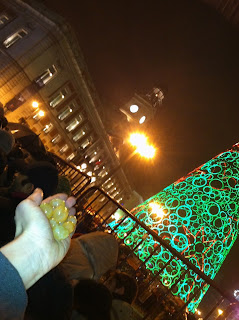July 13, 2010 - Kunming, Yunnan, China
"Without being worked, jade cannot be shaped into a vessel;
without being educated, people cannot be shaped into virtuous citizens."
~Trimetrical Classic
Yunnan is known for exotic mushrooms, tropical flowers, rice noodles, abundance of jade, and much more. During the Silk Road Trade, the Burma Road connected the Indian Ocean with Yunnan, and then up the northern supply routes. Many people believe the Silk Road Trade routes began under the Mongols and ended once their reign ceased. In reality, many of these routes were active long before the Khan families reign and continue today (many of these paths are now paved). During WWII, the Burma Road provided backdoor supply passages for the Flying Tigers - U.S. Air Force stationed in Yunnan to defend China and Southeast Asia against the Japanese.
Sadly, Britain exploited this obscure passage in the 1800's by importing opium to medicate the masses for easier trade relations between Asia and Europe. With this drug affiliation, the Burma Road is nicknamed the "White Road." Wanting to change negative connotations, China currently has a campaign to again rename the Burma Road - the Green Road for jade and tea trade.
This morning I found the most beautiful jade earrings. After waiting an hour for the shop to open, I discovered they cost $655 U.S. I've always had expensive taste. However, I also have a social consciousness. Fearing jades might hold a 'blood diamond' type history, through some research is appears that Burma does use some slave labor to carve the metamorphic gemstone. China, Columbia, Malaysia, and Burma are the largest jade producers in the world. Burma produces the highest quality Jadeite (7 on the hardness scale). There are three classes of jade and you can "hear" their quality.
After hiking temples in Kunming's Western Hills, enjoying a roasted-duck lunch at the Jinquan Restaurant, and further learning about Yunnan's ethnic minorities at the Nationalities Museum, we further investigated this the Green Road jade industry. This is my understanding of jade:
+ Class C - gemstone is injected with color to hide cracks and sounds dull
+ Class B - gemstone is injected with bleach chemical used to clean the inside
+ Class A - remains in natural form, except polished and sounds like a chiming bell when hit with another piece of jade
Chinese people prefer Class A, because the natural cracks create a "living color" with evolving characteristics that form from wearing the same piece of jewelry everyday, for a lifetime. Jade bangles should be worn on the left wrist, because of the strong blood line to the heart (same reason we wear wedding rings on the left hand).
When en-route on the bus, our group plays a game called, "Would your rather..."
- Would you rather be deaf or blind?
- Would you rather be the star of a loosing team or a bench-warmer on a championship team?
- Would you rather never travel more than 40 miles in any direction of your home, or travel the world, but you can never go within 40 miles of your home again?
This question stumped me - I live in paradise, but my passion is traveling.
 |
| Before lunch |
 |
| After lunch |




